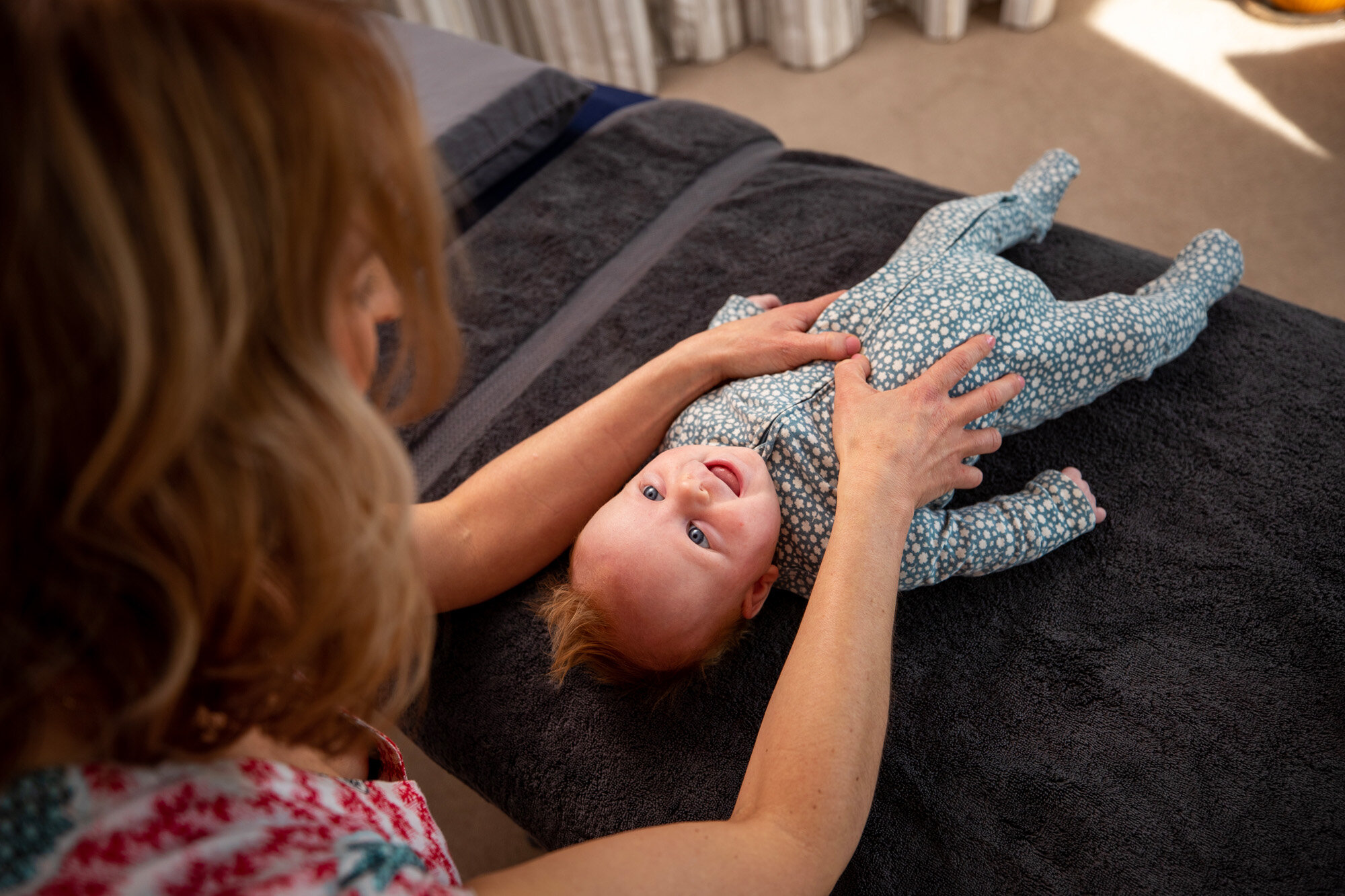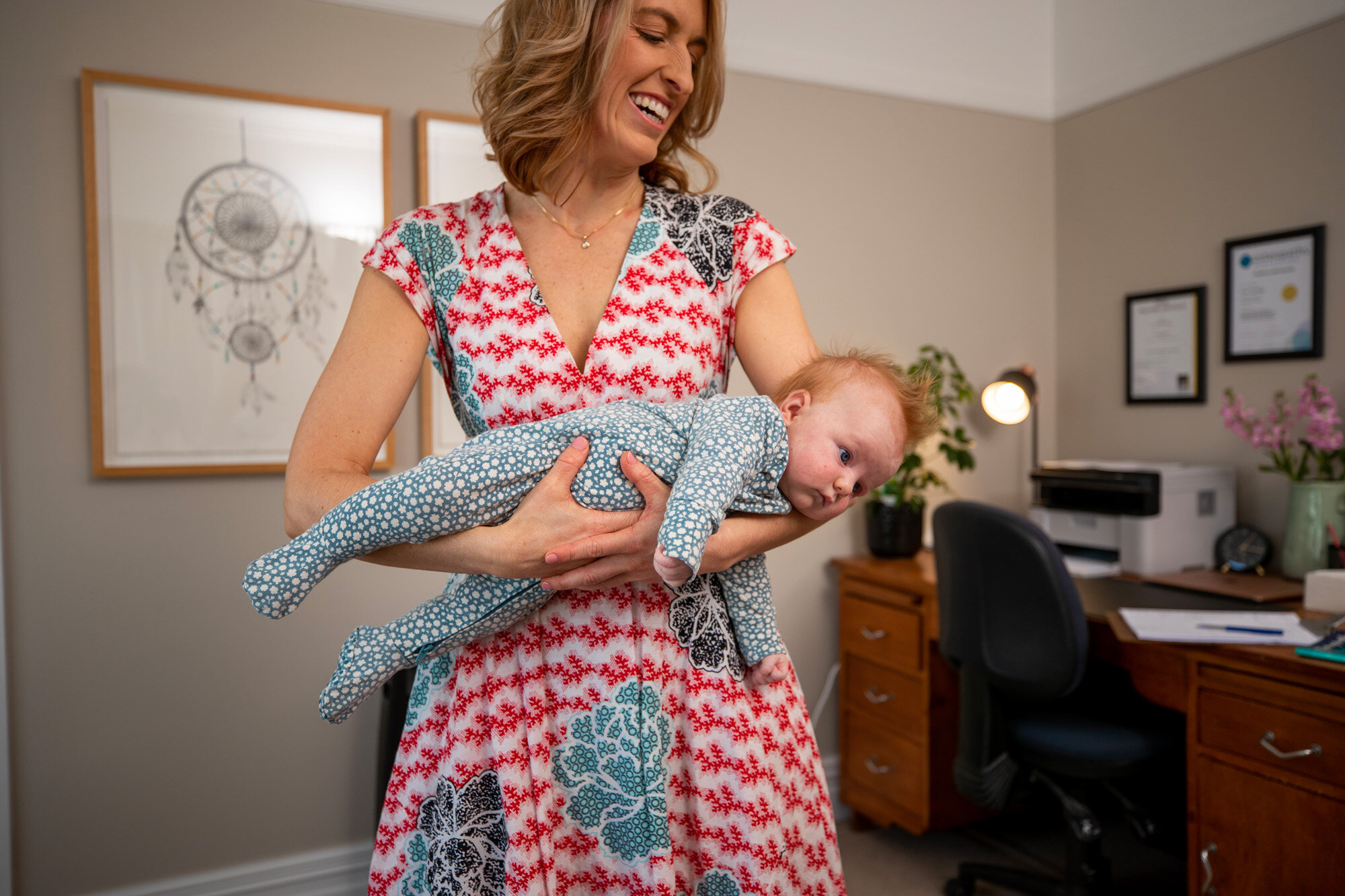
Osteopathy for babies
and children
The calm and soothing approach of Osteopathy makes it especially suitable for treating children, including newborns. It is a common belief that babies and children should have no structural stresses and strains in their body because they are so young and flexible. The reality is very different.

The birth of a baby is one of the most stressful events of its life. The baby is subjected to enormous forces as the uterus pushes to expel the baby against the natural resistance of the birth canal. The baby has to turn and twist as it squeezes through the bony pelvis, on its short but highly stimulating and potentially stressful journey to the outside world.
The baby’s head has the ability to mould and change shape in response to the stresses of a normal labour. If birth stresses remain unresolved then the baby has to adapt to and accommodate these stresses and strains as he/ she grows. This may cause the baby to either be physically uncomfortable and therefore unhappy or develop in an asymmetrical way.
Unresolved birth stresses and the body’s adaptations to them are at the root of many different problems both in childhood right into adult life. These stresses can usually be treated very quickly after birth, but become progressively more difficult to eliminate the longer they have been present.
Many Osteopaths will recommend children having occasional treatment as a preventative measure, to address the accumulative effects of accidents and falls that the body has not fully released by itself.
Children may develop structural problems from a variety of causes including:
Difficulties during pregnancy or birth
Childhood accidents and falls
Infections or inflammatory conditions
Genetic disorders
Structural problems, such as those affecting the proper mobility and function of the body’s framework, can lead to a range of problems. These may include:
Postural – such as scoliosis, torticollis, hip dysplasia
Respiratory – such as asthma, bronchitis, bronchiolitis
Manifestations of brain injury – such as cerebral palsy and spasticity
Developmental – with delayed physical or intellectual milestones, perhaps triggering learning or behaviour difficulties
Infections – in particular recurrent ear and throat infections or urinary disturbances
Feeding/ latching issues – fussy while feeding
Digestive issues – constipation, colic, winding issues, reflux
Sleeping issues – not linking sleep cycles
Plagiocephaly – flat head either positional or congenital
Why Osteopathy works?
Osteopaths recognise that every structure in the body is designed to move. Along with obvious movements, such as crawling, walking, running and skipping. Osteopaths recognise the importance of internal movements including the circulation of blood, the exchange of gases during breathing, the digestion of food and elimination of waste products. Most importantly, Osteopaths realise that within every person there are inherent self-healing and self-regulating mechanisms. Osteopaths assist, accelerate and enhance this natural healing process.




















